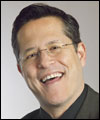A global study of the state of public relations profiles a profession being reshaped by forces as current as digital networks and as timeless as generational divides.
The “Cross Cultural Study of Leadership in Public Relations and Communication Management,” conducted by the Plank Center for Leadership in Public Relations at the University of Alabama, polled nearly 4,500 global PR leaders across 23 nations.
Among the many findings of this comprehensive study: Industry professionals under the age of 36 ranked issues like improving professional image and measurement of communication effectiveness much higher than older professionals (age 55 and up).
Younger and lower-level survey participants also ranked issues of social responsibility, transparency and diverse cultures higher than top leaders. Conversely, more senior leaders emphasized dealing with the speed and volume of information, crisis management or employee engagement.
PR News was curious about this divide on PR priorities. Does a chasm exist that could hurt the industry as a whole? Or is it a natural progression as younger PR pros make their way up the ladder? We asked an agency leader and an in-house communicator to weigh in.
 |
| Richard Laermer |
For Richard Laermer, CEO of RLM Public Relations, there certainly is a difference of priorities between older and younger PR pros. “When you are young you look at the world in a ‘let’s be our best today’ fashion,” says Laermer. “As you get older and set in your ways, change can get frustrating because it means refocusing your day’s work.”
OLD VS. NEW?
At RLM, Laermer says every day it’s a struggle between traditional methods and anything new that agency pros believe will get the job done. “It’s so hard to know what works—and often I find myself going to people much younger than me to find out first,” he says.
The most important finding, says Laermer is the fact that younger PR pros feel that measurement is important. “If the young think that’s important maybe we can crack that code.”
Matthew Broder, vice president of external communications at Pitney Bowes, also sees this divide in action.
 |
| Matthew Broder |
“The younger pros with whom I interact are accustomed to an extremely high flow of information and constant multitasking,” says Broder. “Those are conditions that older PR pros only began to experience mid-career, and therefore these feel like greater challenges to master.”
CHANGING PRIORITIES?
But how important are CSR, transparency and diverse cultures (important issues to younger PR pros) when compared with speed and volume of information, crisis management or employee engagement (priorities of older PR pros)?
Laermer says that how his agency deals with volume and speed of information, crisis management and employee engagement are three of the top areas that make RLM the big bucks. “But CSR, openness and diversity are really what matter if you want to be successful for more than just today,” says Laermer. PRN
[Editor’s Note: Catch Richard Laermer presenting at the PR News Media Relations Conference, Nov. 30 in Washington, D.C. (prnewsonline.com/conferences/mediarelationsconference2012/)]
CONTACT:
Richard Laermer, [email protected]; Matthew Broder, [email protected].
Follow Scott Van Camp: svancamp01
